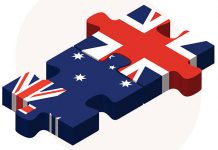Markets
German bonds initially sold off further going into the publication of February European CPI. But ECB’s Lagarde held a speech first. She sounded determined to keep rates at a restrictive enough level (without specifying how high this would be) to tame inflation. Easing less than expected, from 8.6% y/y to 8.5%, headline price pressures indeed remain way above target in February. Core inflation accelerated to a new record of 5.6%, materially more than the 5.3% (which would have matched the January number) anticipated. Underscoring the stickiness of price pressures is services inflation, which hit a new record high as well at 4.8% (up a solid 0.4 ppts). ECB meeting minutes of the February policy meeting later showed a general tendency towards more (and much needed) rate hikes with concerns of overtightening dismissed as being premature. But there were some dovish elements to the minutes as well, with some officials warning of focusing too much on core inflation. Some also pointed out that “recent dynamics of core inflation showed that there had been a leveling-off of momentum”. The data today of course comes back to haunt them. From a risk management perspective, the minutes concluded, there was still value in frontloading rate hikes. Read: 50 bps in March and most likely (desk interpretation) in May. But despite the significant upside inflation surprise and overall hawkish tone to the minutes, Bund losses did not deepen. The opposite even materialized in some kind of a buy the rumour, sell the fact. German yields are currently down 2 bps at the front while the long end still adds 3 bps. The whole curve before the release was up more than 4 bps across the curve. US yields on the other hand surged 4.6-7.3 bps. American rates found new vigor, especially at the long end of the curve. After the US 10y yield broke above the symbolic 4% barrier in Asian dealings this morning a technical acceleration kicked in. A further decline in initial jobless claims to a low 190k and an upward revision to Q4 unit labor costs strengthened the yield upleg. Although outdated, the revision was this big (from 1.1% to 3.2% q/q) that it didn’t go unnoticed.
European stocks fainted at the open. Losses deepened to about 1% before recovering in lockstep with Bunds. The Euro Stoxx 50 currently trades about flat. The sentiment turnaround (dollar negative, euro positive) this time however does not compensate enough for widening yield differentials (vice versa). EUR/USD drops from 1.0668 to 1.0598 currently. USD/JPY rises to 136.81. It serves as important resistance with both the 100 and 200 dMA wandering around in the area. Sterling’s sharp move yesterday was met with follow-through losses. EUR/GBP is again testing 0.8897 resistance as we speak. A successful push higher, quickly brings back 0.90 on the radar. Worth mentioning is the retreat in CE currencies today. The strong, protracted strengthening move by the CZK, HUF and PLN goes in reverse with the former two underperforming.
News & Views
According to the Decision Maker Panel survey of the Bank of England, CFO’s of UK businesses in February expected their own-price inflation to ease the next year by 0.4% to an average of 5.4%. Expectations for CPI inflation one and three years ahead also eases respectively to 5.9% (from 6.4%) and 3.4% (from 3.7%). Actual unit costs in the year to February eased only marginally to 9.8%, but cost for next year also were expected to slow from 8.0% to 7.0%. Still, expected wage growth stayed at 5.7%. Supply side prices even were perceived have deteriorated. 45% of firms reported recruitment difficulties (35% in January) and even slightly higher non-labour input disruptions. Realised employment growth remained strong at 4.3% in the three months to February with expectations for year ahead employment growth also reaccelerating (3-month average 1.9% from 1.5%). Businesses also assessed the overall level of uncertainty to decline (53% down from 57%).
GDP in Brazil contracted 0.2% in the final quarter of 2022, statistics agency IBGE reported. Y/Y growth slowed from 3.6% to 1.9%. Cumulative growth over 2022 was reported at 2.9%. The release was close to expectations. Tighter financial conditions likely resulted in a substantial slowdown of private consumption (0.3% from 1.0% in Q3). Government consumption also slowed (0.3% Q/Q). Investment even contracted 1.1%. Net exports contributed positively due to a 3.5% rise in exports combined with a 1.9% decline of imports. The slowdown in activity might reinforce calls from the government for the central bank to ease the policy rate which is currently 13.75%. The real today declines from USD/BRL 5.18 to 5.22.














